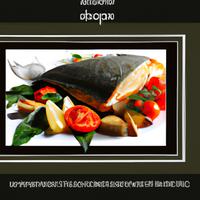
1 serving (100 grams) contains 206 calories, 22.0 grams of protein, 12.0 grams of fat, and 0.0 grams of carbohydrates.

Log this food in SnapCalorie

Nutrition Information
Calories |
490.5 | ||
|---|---|---|---|
% Daily Value* |
|||
| Total Fat | 28.6 g | 36% | |
| Saturated Fat | 7.1 g | 35% | |
| Polyunsaturated Fat | 0 g | ||
| Cholesterol | 166.7 mg | 55% | |
| Sodium | 142.9 mg | 6% | |
| Total Carbohydrates | 0 g | 0% | |
| Dietary Fiber | 0 g | 0% | |
| Sugars | 0 g | ||
| protein | 52.4 g | 104% | |
| Vitamin D | 1071.4 mcg | 5357% | |
| Calcium | 47.6 mg | 3% | |
| Iron | 1.2 mg | 6% | |
| Potassium | 914.3 mg | 19% | |
* Percent Daily Values are based on a 2,000 calorie diet. Your daily values may be higher or lower depending on your calorie needs.
Food Attributes
Source of Calories
About Fish cooked
Fish cooked is a versatile dish that highlights the natural flavors and nutritional benefits of seafood. It is a common staple in cuisines worldwide, including Mediterranean, Asian, and Scandinavian traditions, often prepared by grilling, baking, steaming, or frying. Cooked fish is rich in high-quality protein, omega-3 fatty acids, vitamins D and B12, and essential minerals like iodine and selenium. These nutrients support brain health, heart health, and immune function. Healthier cooking methods, such as steaming or baking, preserve nutrients and minimize added fats or calories. While fried fish can be delicious, frying increases saturated fat and calorie content. Choosing fresh, sustainably sourced fish is recommended to maximize nutrition and minimize environmental impact. This dish can be easily paired with vegetables or whole grains for a balanced, wholesome meal.



